4G LTE/LTE-Advanced for Mobile Broadband
Copyright
Preface
Acknowledgements
Abbreviations and Acronyms
Background of LTE
Introduction
Evolution of Mobile Systems Before LTE
The First 3G Standardization
ITU Activities
IMT-2000 and IMT-Advanced
Spectrum for IMT Systems
Drivers for LTE
Standardization of LTE
The Standardization Process
The 3GPP Process
The 3G Evolution to 4G
High Data Rates in Mobile Communication
High Data Rates: Fundamental Constraints
High Data Rates in Noise-Limited Scenarios
Higher Data Rates in Interference-Limited Scenarios
�Higher Data Rates Within A Limited Bandwidth: Higher-Order Modulation
Higher-Order Modulation in Combination with Channel Coding
Variations in Instantaneous Transmit Power
Wider Bandwidth Including Multi-Carrier Transmission
Multi-Carrier Transmission
OFDM Transmission
Basic Principles of OFDM
OFDM Demodulation
OFDM Implementation Using IFFT/FFT Processing
Cyclic-Prefix Insertion
Frequency-Domain Model of OFDM Transmission
Channel Estimation and Reference Symbols
�Frequency Diversity with OFDM: Importance of Channel Coding
Selection of Basic OFDM Parameters
OFDM Subcarrier Spacing
Number of Subcarriers
Cyclic-Prefix Length
Variations in Instantaneous Transmission Power
OFDM as a User-Multiplexing and Multiple-Access Scheme
Multi-Cell Broadcast/Multicast Transmission and OFDM
Wider-Band “Single-Carrier” Transmission
Equalization Against Radio-Channel Frequency Selectivity
Time-Domain Linear Equalization
Frequency-Domain Equalization
Other Equalizer Strategies
Uplink FDMA with Flexible Bandwidth Assignment
DFT-spread OFDM
Basic Principles
DFTS-OFDM Receiver
User Multiplexing with DFTS-OFDM
Distributed DFTS-OFDM
Multi-Antenna Techniques
Multi-Antenna Configurations
Benefits of Multi-Antenna Techniques
Multiple Receive Antennas
Multiple Transmit Antennas
Transmit-Antenna Diversity
Delay Diversity
Cyclic-Delay Diversity
Diversity by Means of Space–Time Coding
Diversity by Means of Space–Frequency Coding
Transmitter-Side Beam-Forming
Spatial Multiplexing
Basic Principles
Precoder-Based Spatial Multiplexing
Nonlinear Receiver Processing
Scheduling, Link Adaptation, and Hybrid ARQ
Link Adaptation: Power and Rate Control
Channel-Dependent Scheduling
Downlink Scheduling
Uplink Scheduling
�Link Adaptation and Channel-Dependent Scheduling in the Frequency Domain
Acquiring on Channel-State Information
Traffic Behavior and Scheduling
Advanced Retransmission Schemes
Hybrid ARQ with Soft Combining
LTE Radio Access: An Overview
Basic Principles
Transmission Scheme
Channel-Dependent Scheduling and Rate Adaptation
Inter-Cell Interference Coordination
Hybrid ARQ with Soft Combining
Multi-Antenna Transmission
Spectrum Flexibility
Flexibility in Duplex Arrangement
Bandwidth Flexibility
LTE Release 9
Multicast and Broadcast Support
Positioning
Dual-Layer Beam-Forming
LTE Release 10 and IMT-Advanced
Carrier Aggregation
Extended Multi-Antenna Transmission
Relaying
Heterogeneous Deployments
Terminal Capabilities
Radio-Interface Architecture
Overall System Architecture
Core Network
Radio-Access Network
Radio Protocol Architecture
Radio-Link Control
Medium-Access Control
Logical Channels and Transport Channels
Scheduling
Hybrid ARQ with Soft Combining
Physical Layer
Control-Plane Protocols
State Machine
Physical Transmission Resources
Overall Time–Frequency Structure
Normal Subframes and Mbsfn Subframes
Carrier Aggregation
Frequency-Domain Location Of LTE Carriers
Duplex Schemes
Frequency-Division Duplex (FDD)
Time-Division Duplex (TDD)
LTE and TD-SCDMA Coexistence
Downlink Physical-Layer Processing
Transport-Channel Processing
Processing Steps
CRC Insertion Per Transport Block
Code-Block Segmentation and Per-Code-Block CRC Insertion
Channel Coding
Rate Matching and Physical-Layer Hybrid-ARQ Functionality
Bit-Level Scrambling
Data Modulation
Antenna Mapping
Resource-Block Mapping
Localized and Distributed Resource Mapping
Downlink Reference Signals
Cell-Specific Reference Signals
Structure of a Single Reference Signal
Multiple Reference Signals
Demodulation Reference Signals
CSI Reference Signals
CSI-RS Structure
Muted CSI-RS
Multi-Antenna Transmission
Transmit Diversity
Transmit Diversity for Two Antenna Ports
Transmit Diversity for Four Antenna Ports
Codebook-Based Precoding
Closed-Loop Operation
Open-Loop Operation
Non-Codebook-Based Precoding
Downlink Multi-User MIMO
MU-MIMO within Transmission Modes 8/9
MU-MIMO Based on CRS
Downlink L1/L2 Control Signaling
Physical Control Format Indicator Channel
Physical Hybrid-ARQ Indicator Channel
Physical Downlink Control Channel
Downlink Scheduling Assignment
Signaling of Downlink Resource-Block Allocations
Signaling of Transport-Block Sizes
Uplink Scheduling Grants
Signaling of Uplink Resource-Block Allocations
Carrier Aggregation and Cross-Carrier Scheduling
Power-Control Commands
PDCCH Processing
Blind Decoding of PDCCHs
Uplink Physical-Layer Processing
Transport-Channel Processing
Processing Steps
Mapping to the Physical Resource
PUSCH Frequency Hopping
Hopping Based on Cell-Specific Hopping/Mirroring Patterns
Hopping Based on Explicit Hopping Information
Uplink Reference Signals
Uplink Demodulation Reference Signals
Basic Principles of Uplink DM-RS
Phase-Rotated Reference-Signal Sequences
Reference-Signal Assignment to Cells
Sequence Hopping
Multiple Demodulation Reference Signals
Uplink Sounding Reference Signals
Periodic SRS Transmission
Aperiodic SRS Transmission
Uplink Multi-Antenna Transmission
Precoder-Based Multi-Antenna Transmission for PUSCH
Uplink Multi-User MIMO
PUCCH Transmit Diversity
Uplink L1/L2 Control Signaling
Uplink L1/L2 Control Signaling on PUCCH
PUCCH Format 1
PUCCH Format 2
PUCCH Format 3
Simultaneous Transmission of Multiple Feedback Reports
Resource-Block Mapping for PUCCH
Uplink L1/L2 Control Signaling on PUSCH
Uplink Timing Alignment
Retransmission Protocols
Hybrid ARQ with Soft Combining
Downlink Hybrid ARQ
Uplink Hybrid ARQ
Hybrid-ARQ Timing
Radio-Link Control
Segmentation, Concatenation, and Reassembly of RLC SDUs
RLC Retransmission
In-Sequence Delivery
RLC Operation
Power Control, Scheduling, and Interference Handling
Uplink Power Control
Uplink Power Control – Some Basic Rules
Power Control for PUCCH
Power Control for PUSCH
Power Control for SRS
Power Headroom
Scheduling and Rate Adaptation
Downlink Scheduling
Uplink Scheduling
Uplink Priority Handling
Scheduling Requests and Buffer Status Reports
Semi-Persistent Scheduling
Scheduling for Half-Duplex FDD
Channel-State Reporting
Discontinuous Reception (DRX) and Component Carrier Deactivation
Inter-Cell Interference Coordination
Heterogeneous Network Deployments
Interference Handling in a Heterogeneous Deployment
Interference Coordination in the Case of Home-eNodeB
Access Procedures
Acquisition and Cell Search
Overview of LTE Cell Search
PSS Structure
SSS Structure
System Information
MIB and BCH Transmission
System-Information Blocks
Random Access
Step 1: Random-Access Preamble Transmission
PRACH Time–Frequency Resources
Preamble Structure and Sequence Selection
PRACH Power Setting
Preamble Sequence Generation
Preamble Detection
Step 2: Random-Access Response
Step 3: Terminal Identification
Step 4: Contention Resolution
Paging
Multimedia Broadcast/Multicast Services
Architecture
Overall Channel Structure and Physical-Layer Processing
Scheduling of MBMS Services
Relaying
Relays in LTE
Overall Architecture
Backhaul Design for Inband Relaying
Access-Link Hybrid-ARQ Operation
Backhaul-Link Hybrid-ARQ Operation
Backhaul Downlink Control Signaling
Reference Signals for the Backhaul Link
Backhaul–Access Link Timing
Spectrum and RF Characteristics
Spectrum for LTE
Spectrum Defined for IMT Systems by the ITU-R
Frequency Bands for LTE
New Frequency Bands
Flexible Spectrum USE
Flexible Channel Bandwidth Operation
Carrier Aggregation for LTE
Multi-Standard Radio Base Stations
Overview of RF Requirements for LTE
Transmitter Characteristics
Receiver Characteristics
Regional Requirements
Band-Specific UE Requirements Through Network Signaling
Base-Station Classes
Output Power Level Requirements
Base-Station Output Power and Dynamic Range
UE Output Power and Dynamic Range
Transmitted Signal Quality
EVM and Frequency Error
UE In-Band Emissions
Base-Station Time Alignment
Unwanted Emissions Requirements
Implementation Aspects
Spectrum Emission Mask
Base-Station Operating Band Unwanted Emission Limits
UE Spectrum Emission Mask
Adjacent Channel Leakage Ratio
Spurious Emissions
Occupied Bandwidth
Transmitter Intermodulation
Sensitivity and Dynamic Range
Receiver Susceptibility to Interfering Signals
Performance
Performance Assessment
End-User Perspective of Performance
Operator Perspective
Performance in Terms of Peak Data Rates and Latency
Performance Evaluation of LTE-Advanced
Models and Assumptions
Evaluation Criteria
Performance Numbers for FDD
Performance Numbers for TDD
Conclusion
Other Wireless Communications Systems
HSPA
Architecture
Channel-Dependent Scheduling
Hybrid ARQ with Soft Combining
Control-Plane Latency Reductions
Spatial Multiplexing
Carrier Aggregation
UTRA TDD
GSM/EDGE
Objectives for GSM/EDGE Evolution
Dual-Antenna Terminals
Multi-Carrier EDGE
Reduced TTI and Fast Feedback
Improved Modulation and Coding
Higher Symbol Rates
Voice Service over Adaptive Multi-User Channels
CDMA2000 and HRPD/1x EV-DO
CDMA2000 1x
1x EV-DO Rev 0
1x EV-DO Rev A
1x EV-DO Rev B
1x EV-DO Rev C
IEEE 802.16e, Mobile WiMAX and 802.16 m
IEEE 802.16e and Mobile WiMAX
IEEE 802.16 m – WiMAX for IMT-Advanced
Summary
Final Thoughts
Where To Go in the Future?
Advanced Multi-Cell Coordination
Network Energy Efficiency
Machine-Type Communication
New ways of Using Spectrum
Direct Device-to-Device Communication
Concluding Remarks
References
Index

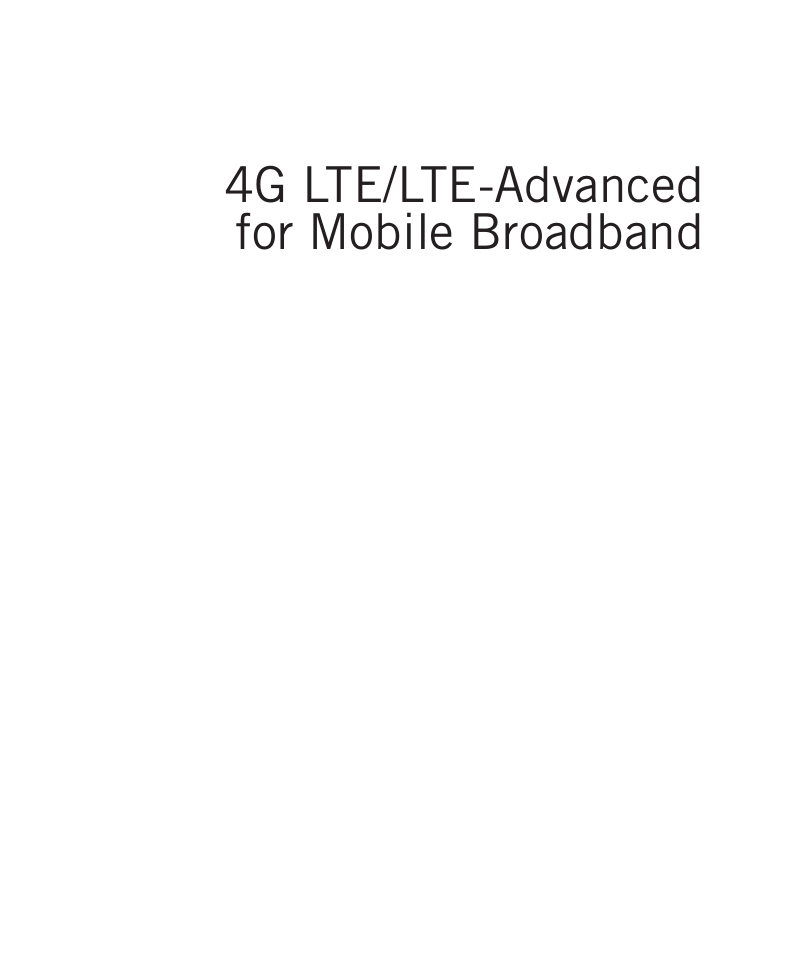
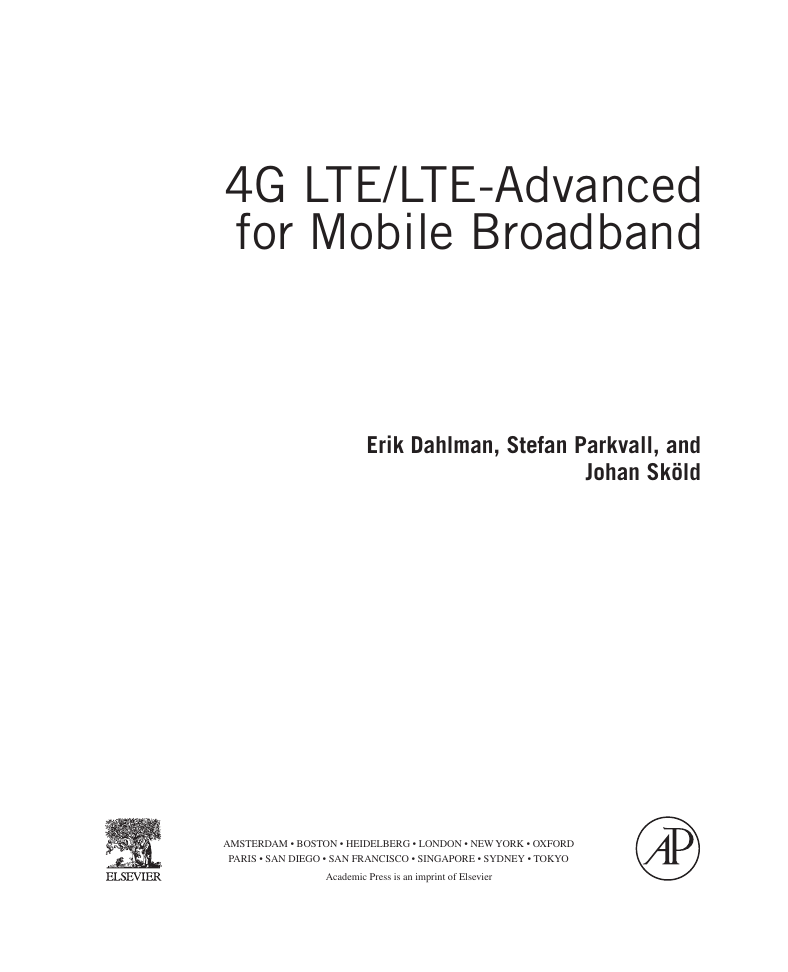

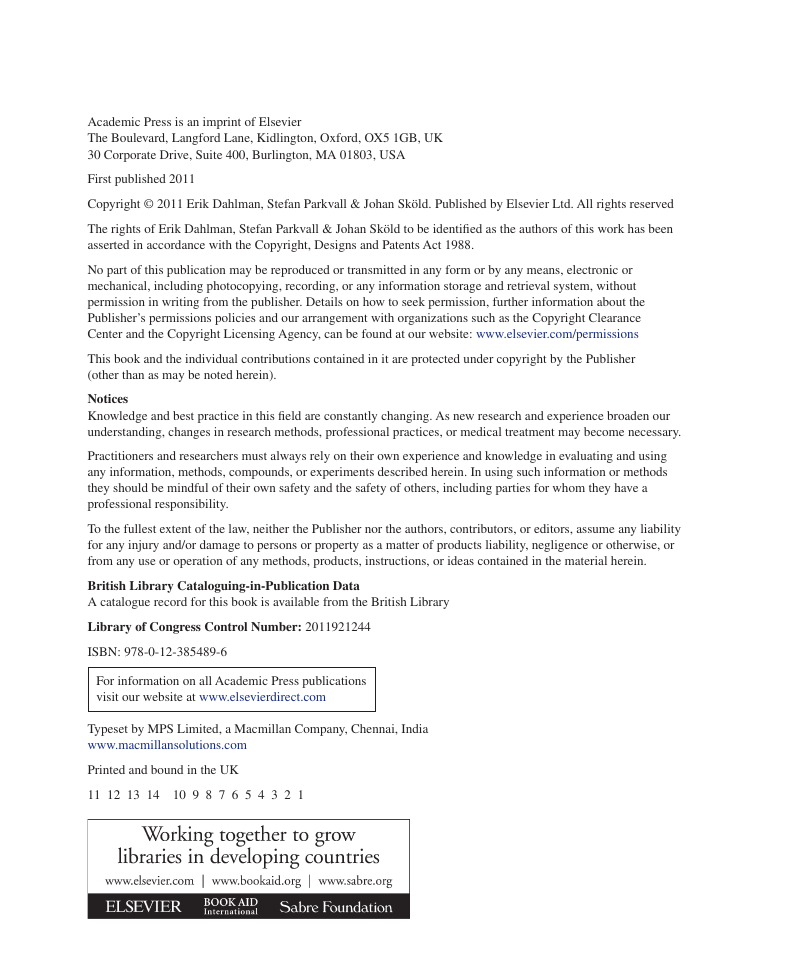
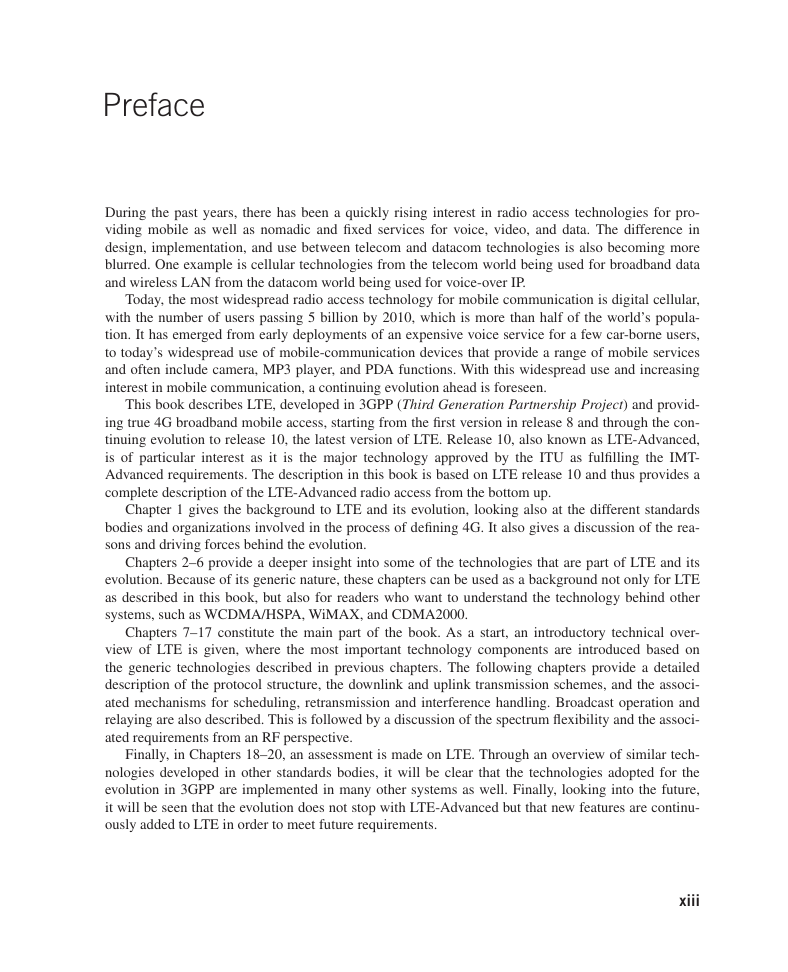
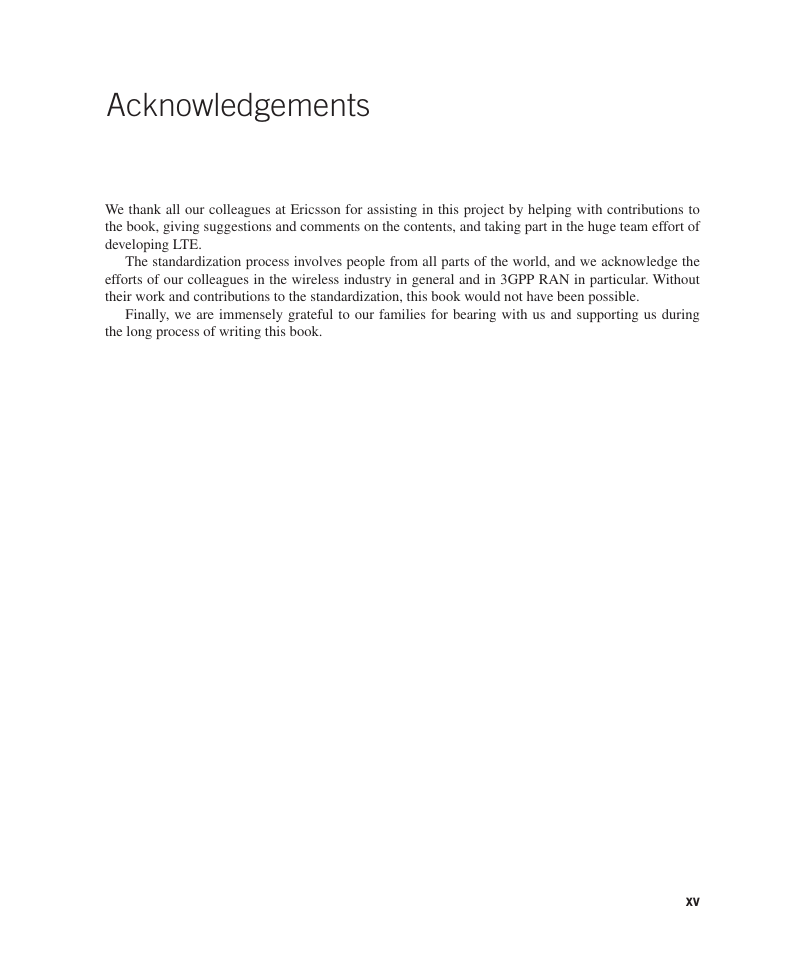









 2023年江西萍乡中考道德与法治真题及答案.doc
2023年江西萍乡中考道德与法治真题及答案.doc 2012年重庆南川中考生物真题及答案.doc
2012年重庆南川中考生物真题及答案.doc 2013年江西师范大学地理学综合及文艺理论基础考研真题.doc
2013年江西师范大学地理学综合及文艺理论基础考研真题.doc 2020年四川甘孜小升初语文真题及答案I卷.doc
2020年四川甘孜小升初语文真题及答案I卷.doc 2020年注册岩土工程师专业基础考试真题及答案.doc
2020年注册岩土工程师专业基础考试真题及答案.doc 2023-2024学年福建省厦门市九年级上学期数学月考试题及答案.doc
2023-2024学年福建省厦门市九年级上学期数学月考试题及答案.doc 2021-2022学年辽宁省沈阳市大东区九年级上学期语文期末试题及答案.doc
2021-2022学年辽宁省沈阳市大东区九年级上学期语文期末试题及答案.doc 2022-2023学年北京东城区初三第一学期物理期末试卷及答案.doc
2022-2023学年北京东城区初三第一学期物理期末试卷及答案.doc 2018上半年江西教师资格初中地理学科知识与教学能力真题及答案.doc
2018上半年江西教师资格初中地理学科知识与教学能力真题及答案.doc 2012年河北国家公务员申论考试真题及答案-省级.doc
2012年河北国家公务员申论考试真题及答案-省级.doc 2020-2021学年江苏省扬州市江都区邵樊片九年级上学期数学第一次质量检测试题及答案.doc
2020-2021学年江苏省扬州市江都区邵樊片九年级上学期数学第一次质量检测试题及答案.doc 2022下半年黑龙江教师资格证中学综合素质真题及答案.doc
2022下半年黑龙江教师资格证中学综合素质真题及答案.doc